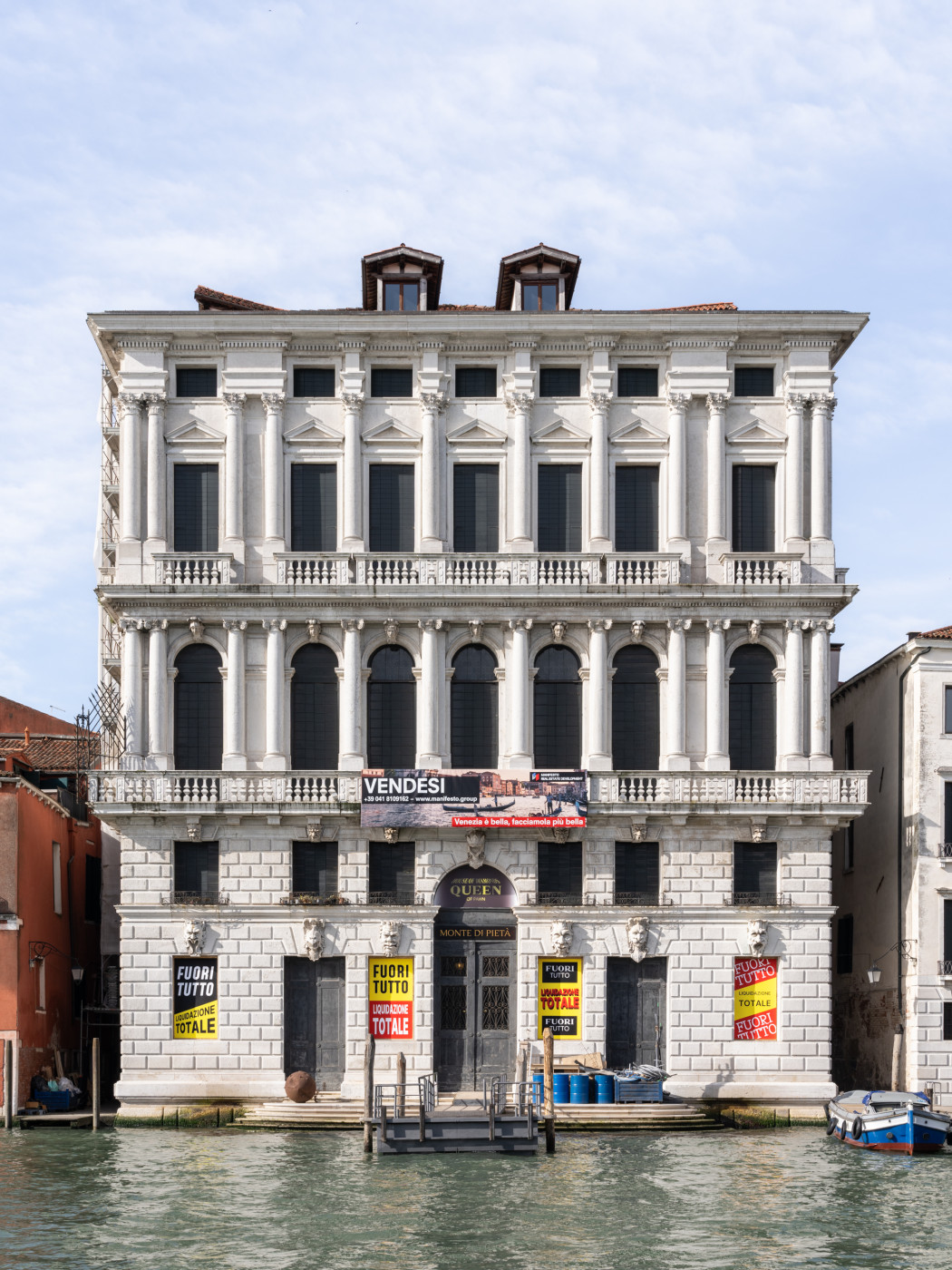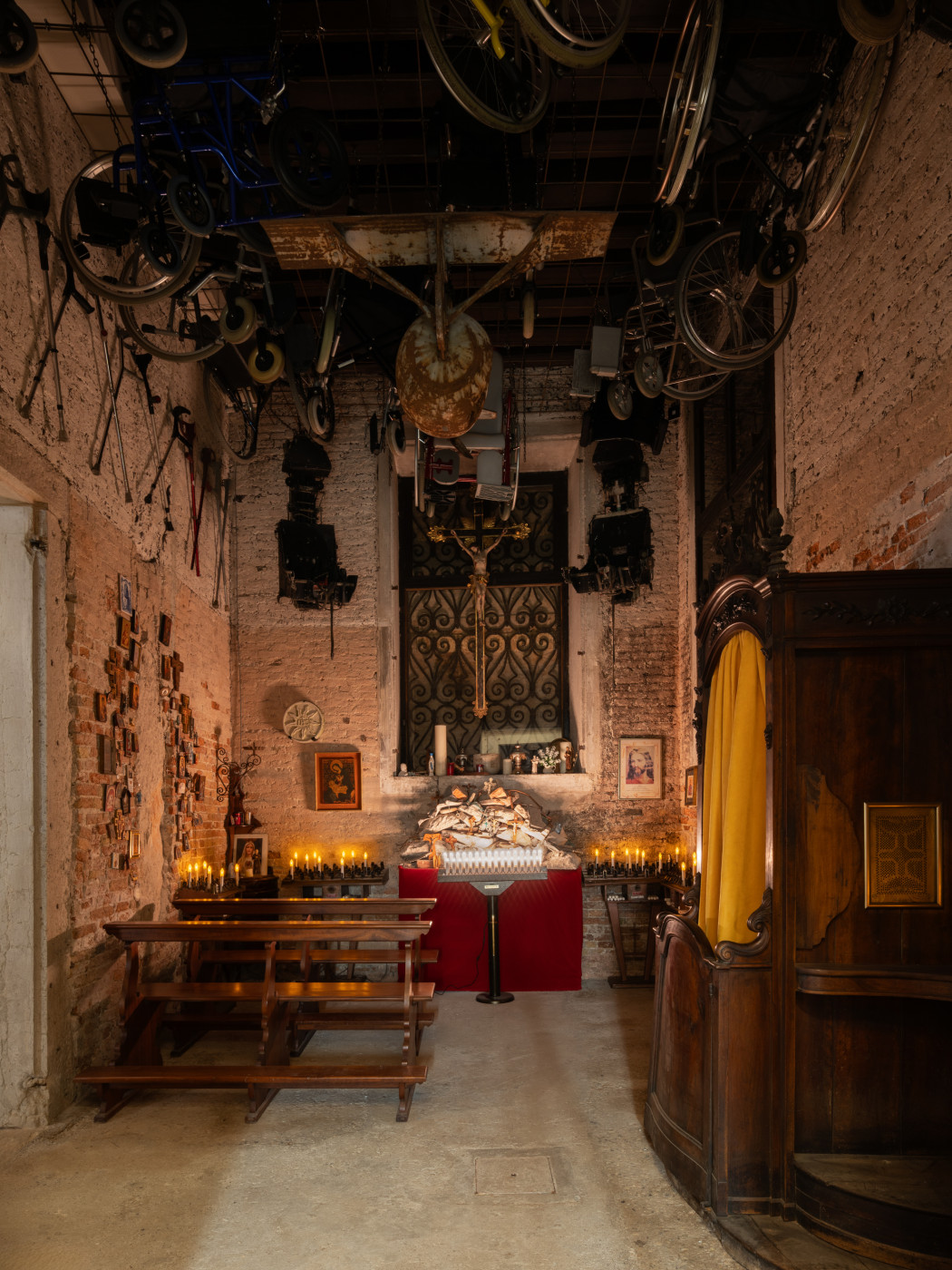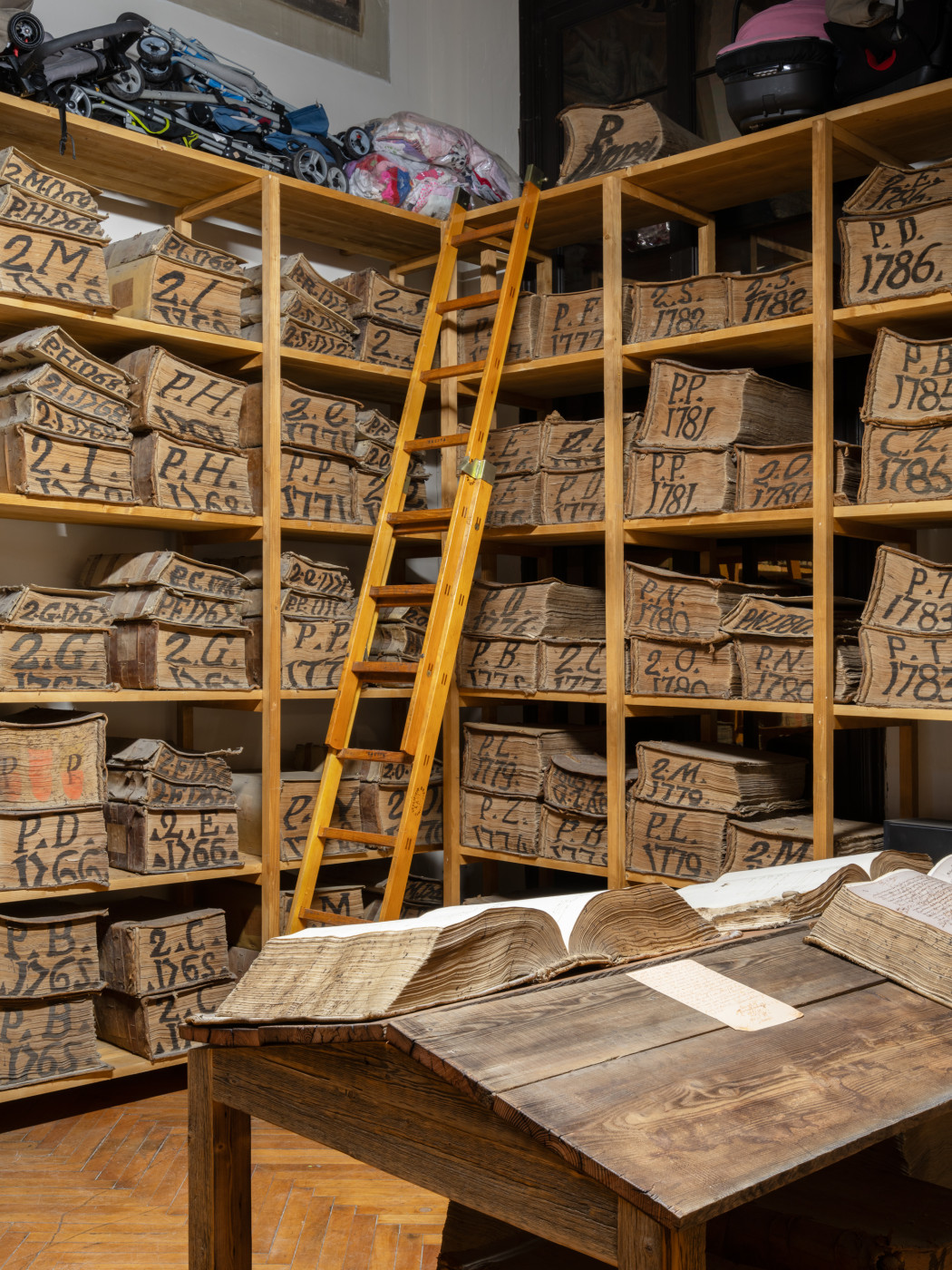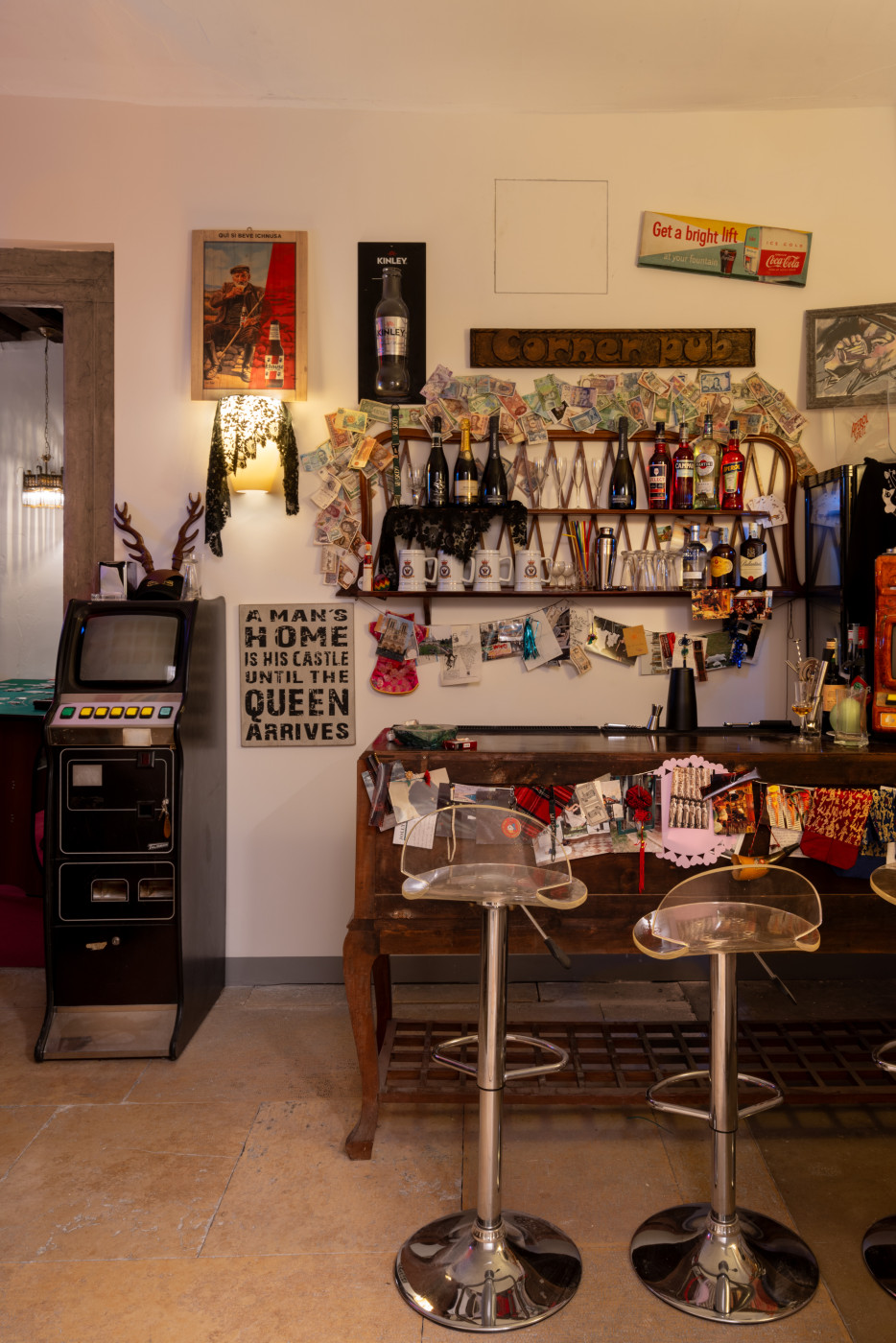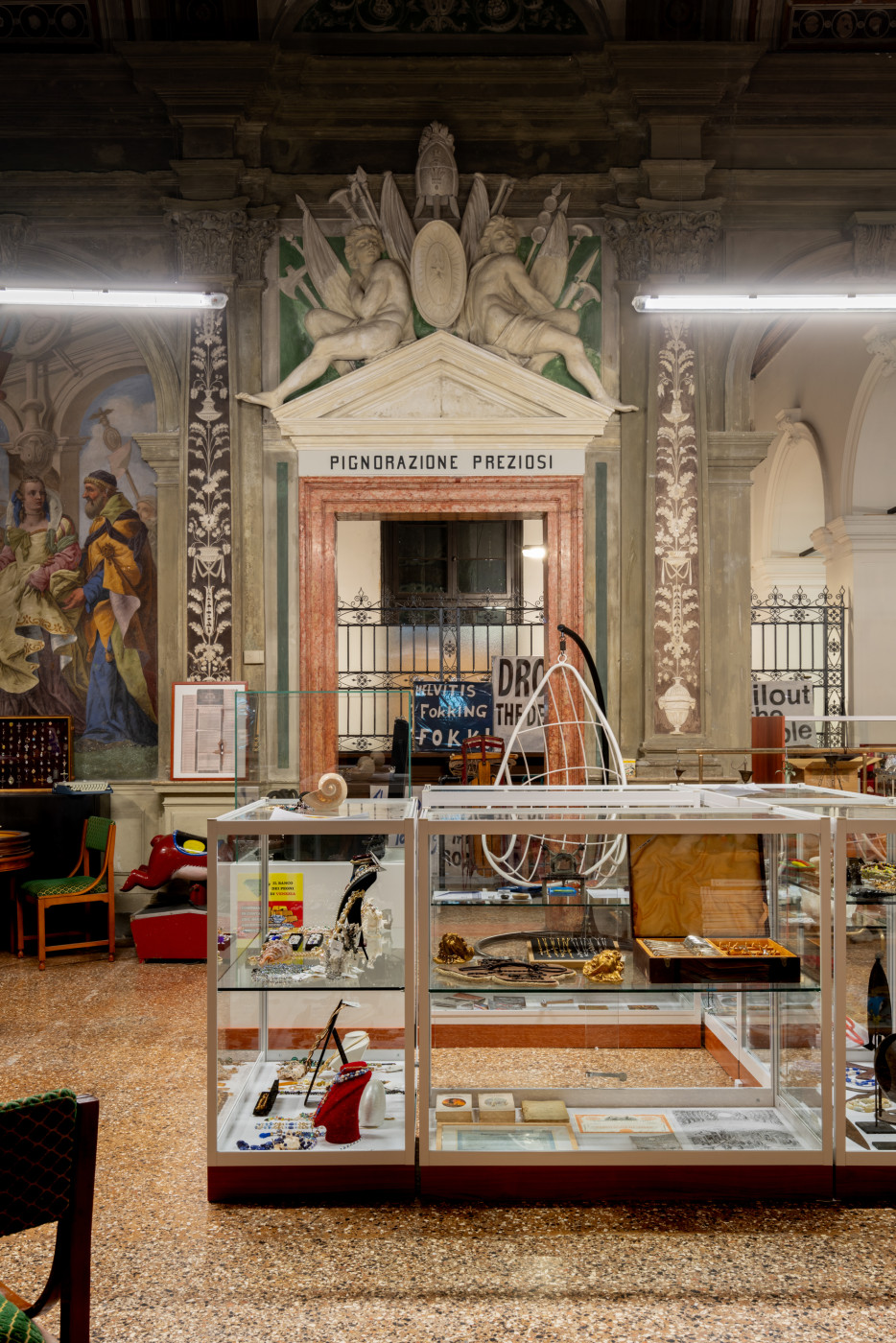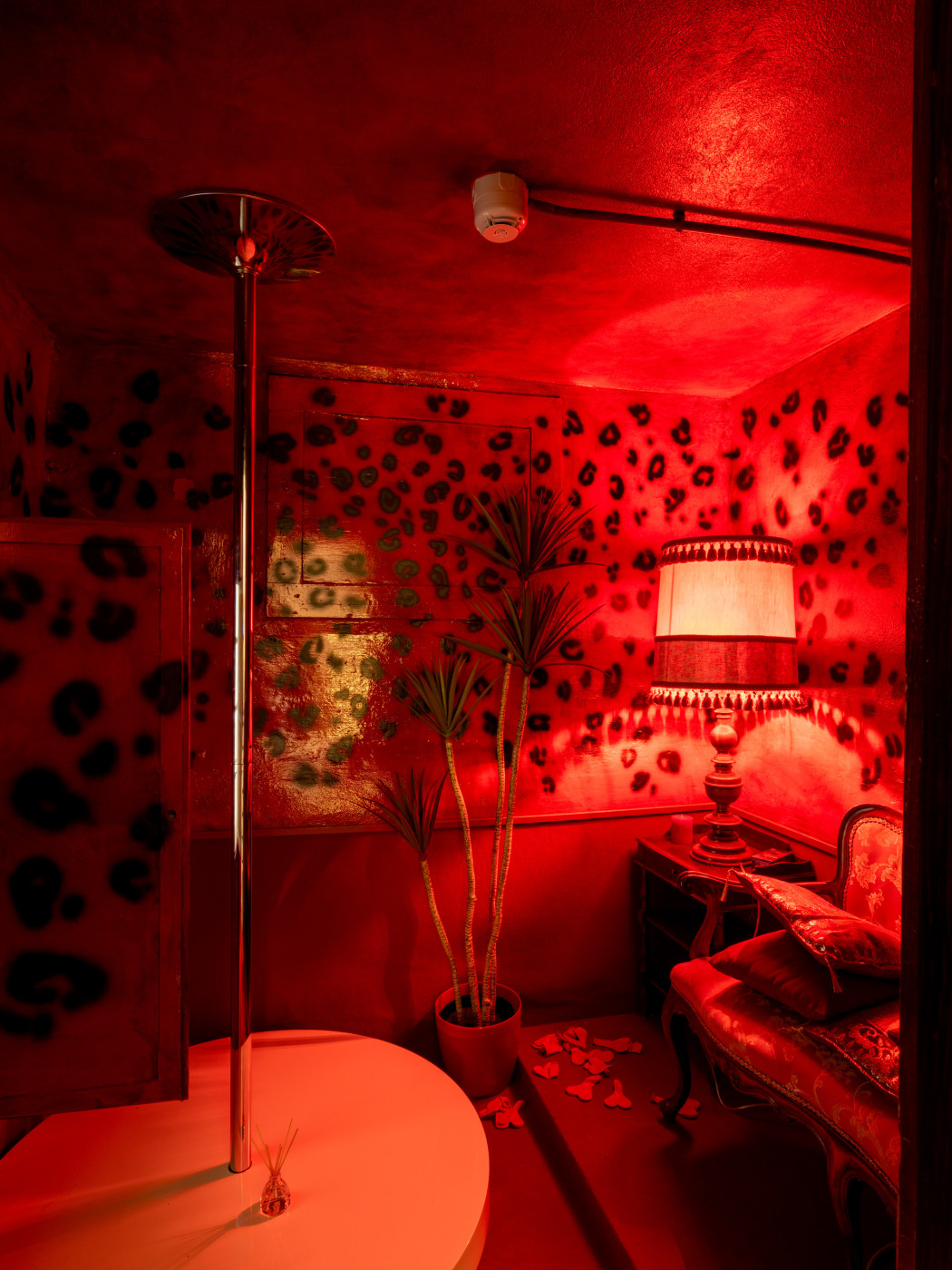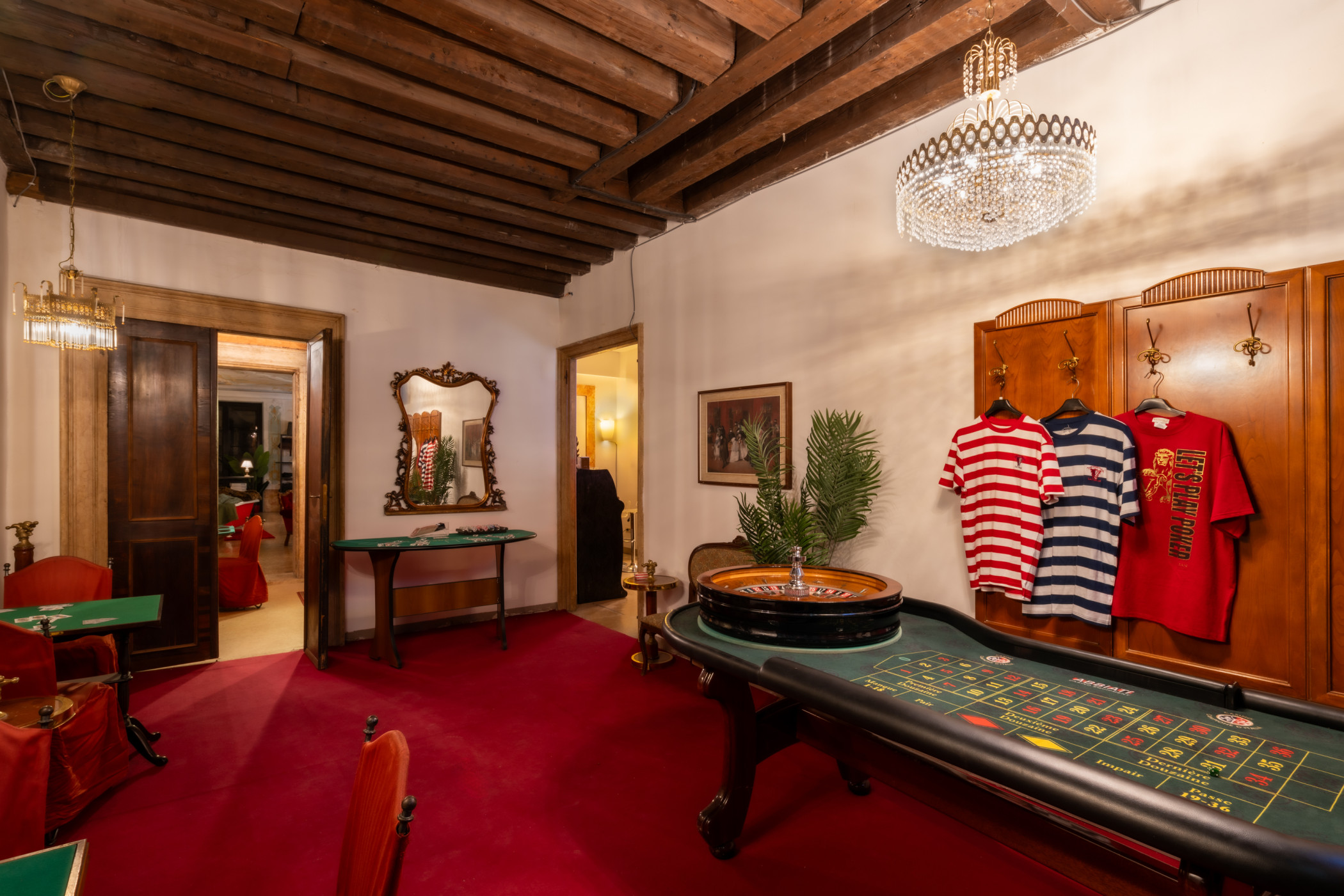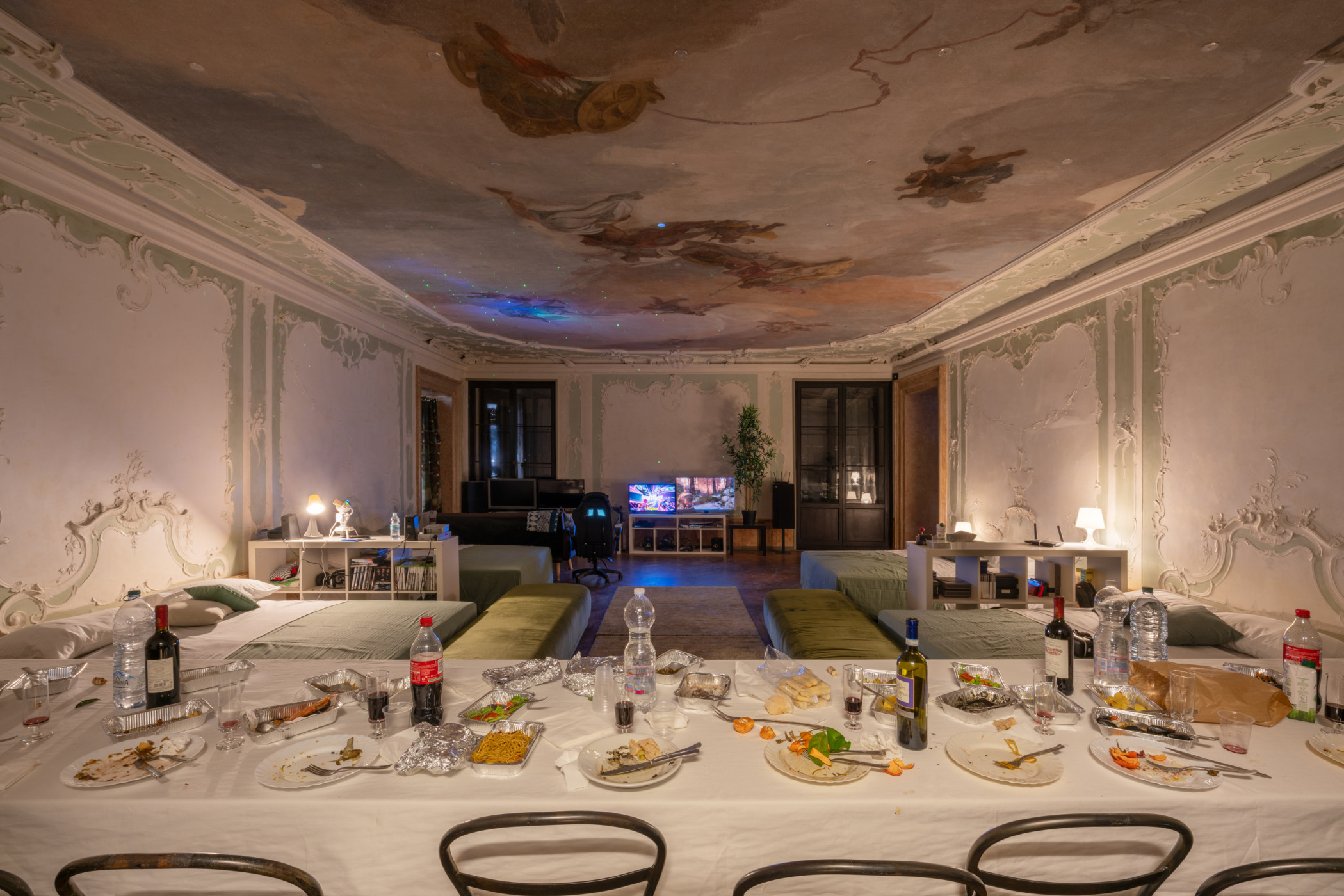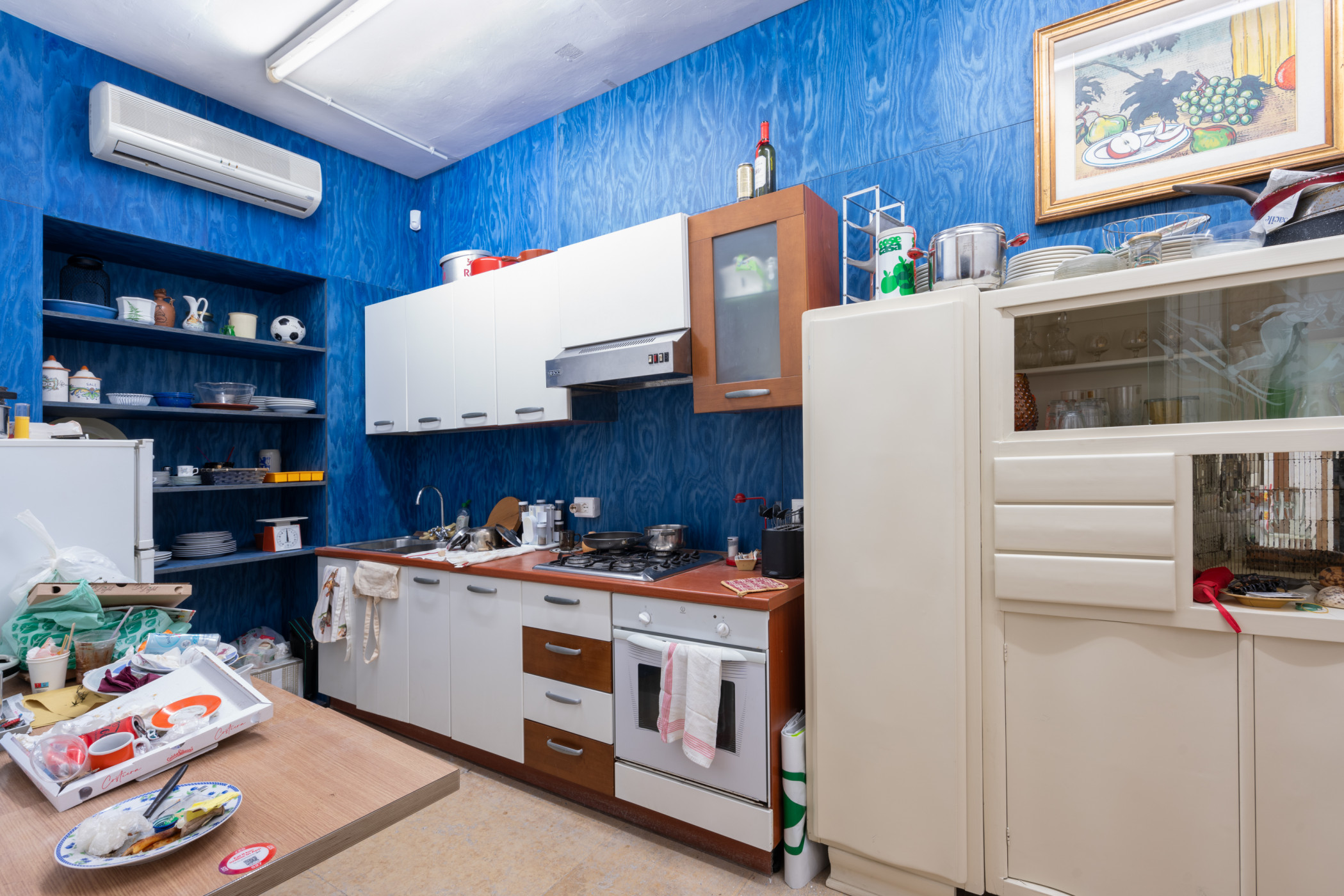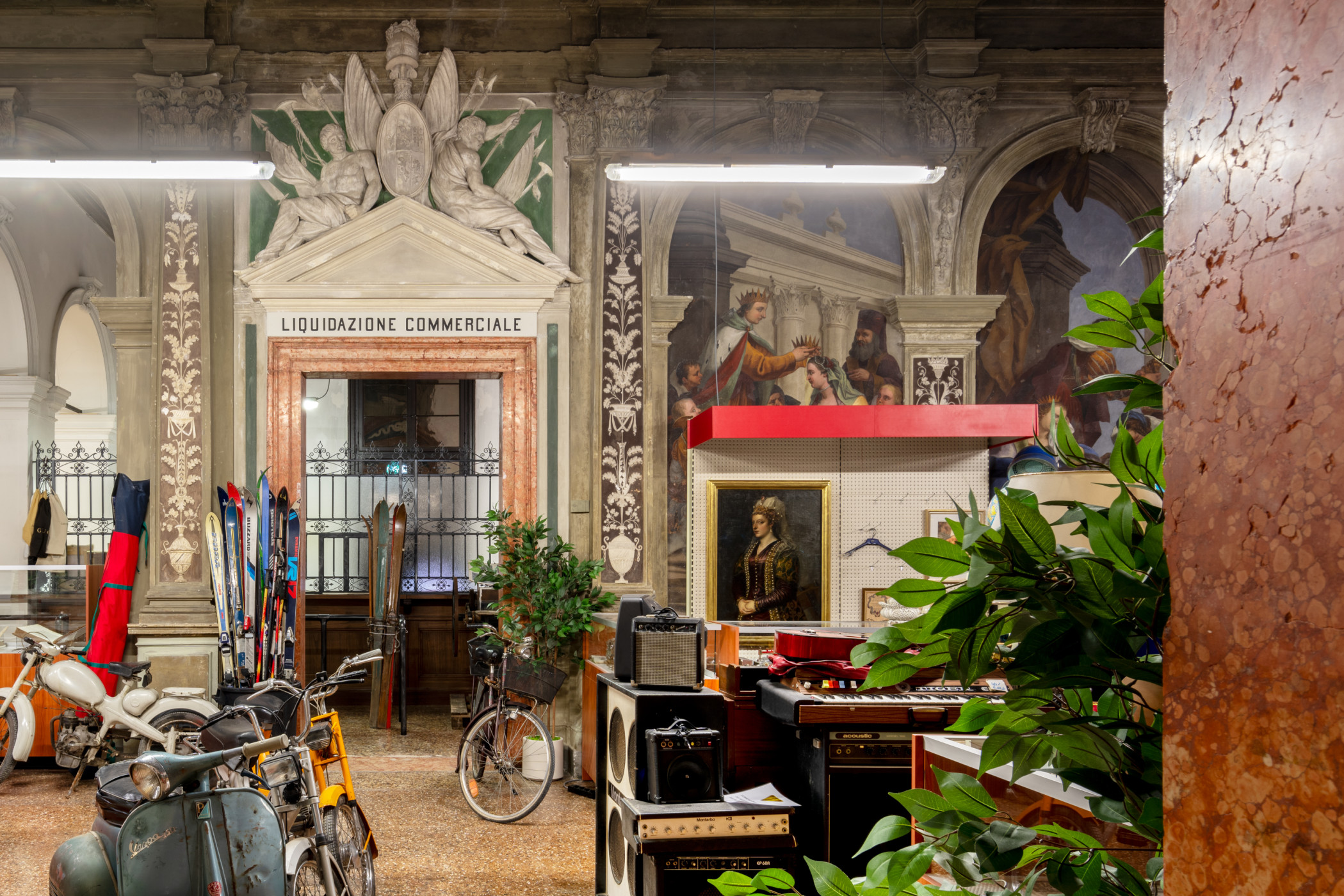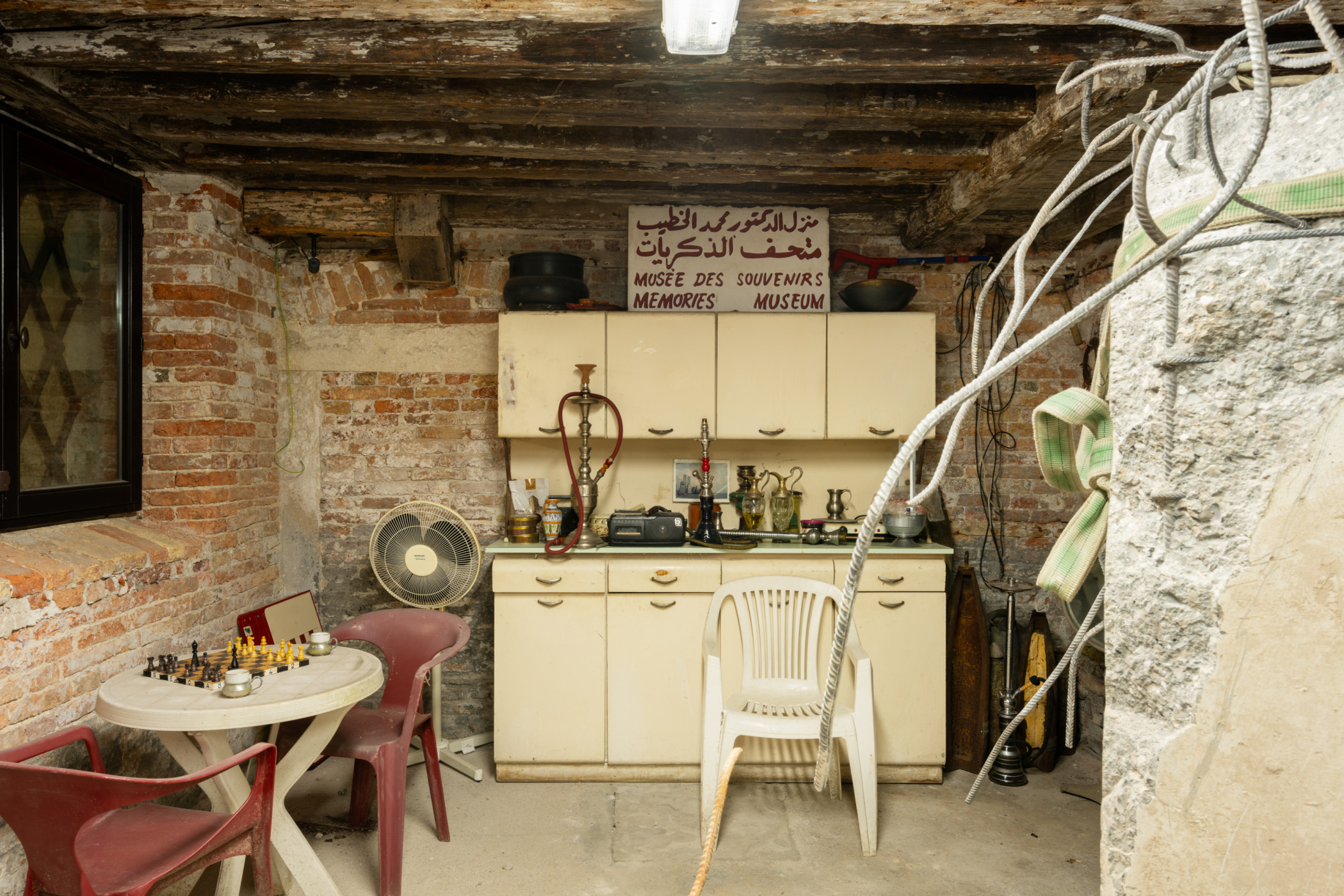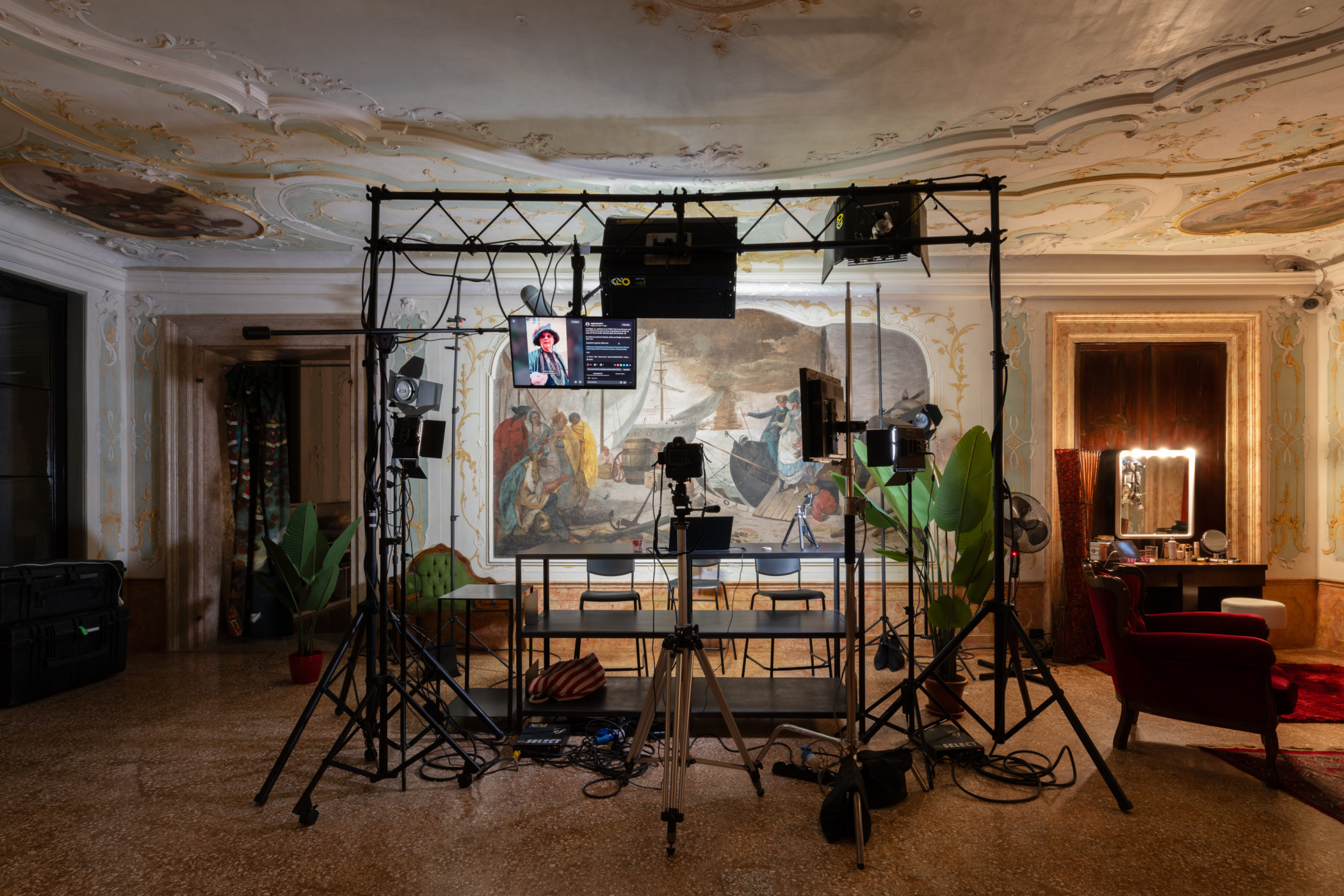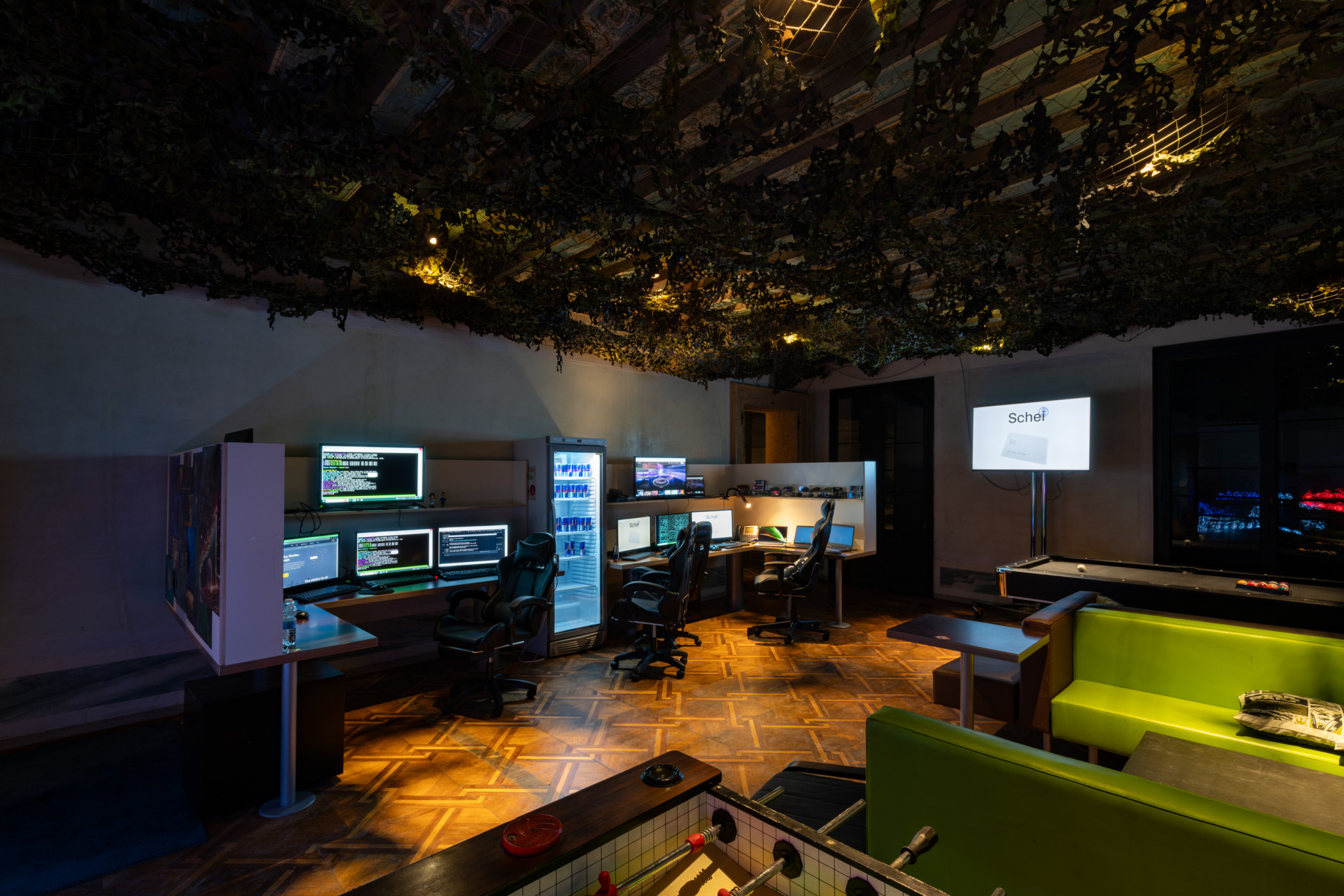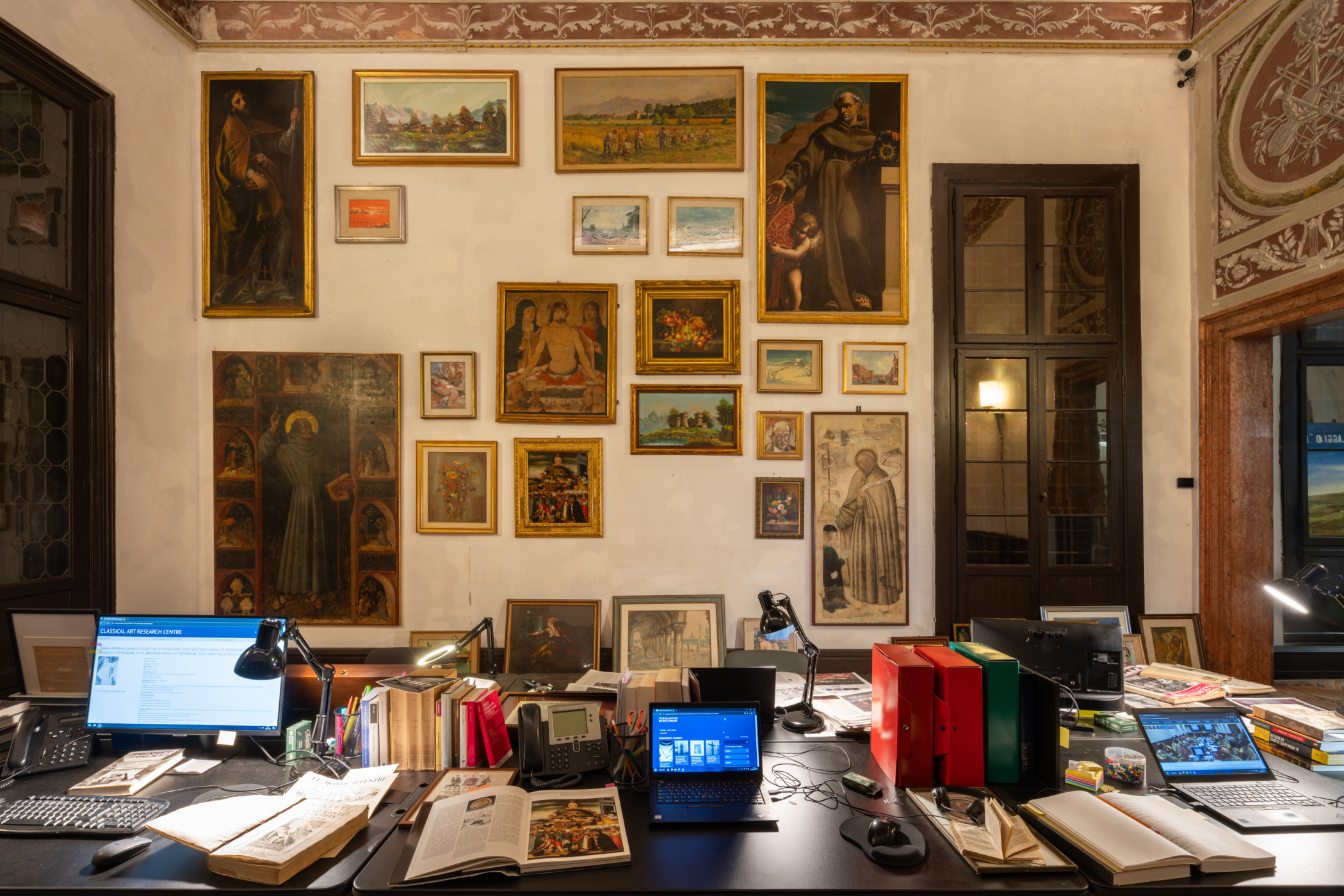
Subscribe
On The NewsSubscribe
confirmed Your subscription to our list has been confirmed.
Monte di Pietà: The Universe of Exploitation and Manipulation
Christoph Büchel’s Monte di Pietà, which is currently on display in Venice Fondazione Prada, addresses the source of political and economic power.
The most extraordinary show is currently taking place in Venice not at the Arsenale or Giardini, but in the palazzo Ca’ Corner della Regina, the Venetian branch of Fondazione Prada. The show in question is Christoph Büchel’s immersive installation Monte di Pietà that deals with money — debts, collateral, and all sorts of other, legal and not so legal, ways of extracting money, from mining to washing.
The first and the most important thing that will be written in any article about Christoph Büchel is that he is a troublemaker, who drains all the art institutions, with which he works, to the point of complete exhaustion, both moral and financial, and a provocateur, whose almost every single one maniacally detailed and deafeningly naturalistic installation is accompanied by a scandal. And in connection with the current one, everyone lists his two previous works at Venice. At the Biennale di Venezia in 2015, he represented Iceland, which does not have a permanent pavilion, and called his project "Mosque," arranging a functioning mosque in one of Venice’s idle churches. Venetian Muslims, who have no mosque in the city, began to gather there for Friday prayers, and the police quickly shut down the pavilion/church/mosque due to the violations of sanitary and fire safety standards, as well as the public protests, fearing a hypothetical escalation. In 2019, he brought to Venice an old fishing boat with hull breaches and no explanatory signs and placed it at the embankment inside the Arsenal, at a point where the exhibition ends and the exhausted visitors plop themselves down in a glass-walled café. The project was called Barca Nostra and it was the very ship that was carrying refugees and sank on its way to the island of Lampedusa on April 18, 2015 — more than 800 people died, with only 28 surviving, and it was the biggest disaster of that period’s refugee crisis in the Mediterranean. The ship was raised from the sea bottom in 2016 and installed in Sicily, where Büchel rented it for a year for his project, undertaking all the transportation costs. As a result, he was accused of cynically devaluing the memory of the victims and exploiting the tragedy, then faced problems with the reimbursement of expenses, and spent a lot of time in courts because of this.
It must be said that this time — so far — Fondazione Prada and its director Miuccia Prada have managed to avoid any lawsuits and scandals — there have been no protests, public scuffles over the budget, or ruined deadlines. And this despite the fact that it is enough to enter Ca’ Corner della Regina to understand what a colossal work has been done: all three floors — the two main floors, where the exhibitions usually take place, and the third, mezzanine, which has never been opened to the public, are filled and rammed with all sorts of junk, which for several years was collected all over Europe and from eBay (and this process continues), taken to the specially rented warehouses on the mainland, and then for three months every day brought here by boat, to the Canal Grande, making hundreds and hundreds of trips.
Monte di Pietà is the name of a Catholic mutual aid fund, which arose in the 15th century and was founded by the Franciscans in order to combat usury, under which money was lent to the poor against the pledge of their movable property. The trick with the name is not only that it was, in fact, a pivot towards the modern banking system and those very financial practices and instruments that govern our lives today and determine the structure of modern society. And it was in the building of Ca’ Corner della Regina that the Venetian Monte di Pietà was located from 1834 until 1969. But this nod to the building’s genius loci is just the most obvious — and even noted in the press release — layer of that mercurial palimpsest that this show presents to every visitor.
Much more inconspicuous in every way is the small sign “D. Graeber” placed near the doorbell on the wall, next to one of the many doors in the depths of palazzo Ca’ Corner. Upon discovering it the attentive viewer (well, an expert in modern social theories) should remember David Graeber, an American anthropologist and anarchist activist, the author of the intellectual bestseller Debt: The First 5,000 Years (doesn’t it sound good next to the title Monte di Pietà?) and the ideologist of the Occupy movement (remember, Occupy Wall Street?), who, among other things, died suddenly in Venice in September 2020, having arrived there with his wife on vacation. And everyone who finds this bell and this door seems to think that it opens the way to the very essence of what Christoph Büchel wanted to tell us with his work of art. And, of course, they are deceived.
The critique of late capitalism, anti-colonialism, research into the roots of political and cultural power — of course, the full set of leftist pop slogans that seem to be obligatory for contemporary art these days is manifested in this jaw dropping installation that appears to turn the palazzo into some kind of a pawn shop. But Büchel would not be Büchel — that is, the principal mocker of the contemporary art scene — if he didn’t go further.
Let's take the most widely publicized and the most eye-catching episode of this show — the story of the case of diamonds that Büchel produced with the help of the Swiss company Algordanza from the ashes of his burned artworks with the addition of his own DNA extracted from his excrement (“The Diamond Maker” project (2020-ongoing)). And, of course, at this point, every sophisticated visitor cannot resist the urge to shout: “All this has happened before!” — and recall anyone, either Manzoni, or Hirst — and Büchel is just waiting for this, etching Merda d'artista by the same Manzoni next to his diamond suitcase. Debunking the romantic myths about an inspired artist who torments himself, creating unique works, Büchel not only denies the very idea of originality, but also emphatically demonstrates how he makes money from it.
Büchel does the same with any interpretation — dodging, slipping out, and hiding behind the mountains of rubbish, among which, by the way, more than a hundred real artworks are hidden, not marked in any way (and if you see a painting that reminds you of, say, Titian, then know that this is the real Ritratto di Caterina Cornaro from Uffizi gallery), providing the visitors with an opportunity to practice both their erudition and interpretation. And Monte di Pietà itself, if you examine it closely, does not really look like the proverbial pawn shop — or rather, it resembles much more than that.
The very first level, piano terra, looks more like some kind of refugee camp or a temporary shelter for victims of some cataclysm with all those rows of camp beds, a pile of wheelchairs in the corner, a room for security guards, and clothes drying in the yard, with Prada labels on some. The next one, piano nobile, really does look like a pawnshop or a confiscated goods warehouse, but the last one, the mezzanino, houses all sorts of shady businesses like an underground casino, a strip club, a computer room for crypto mining, and even a TikToker’s studio (apparently, Büchel also considers social media to be a tool for exploitation and manipulation). And looking at all these three levels, we can say that it is Christoph Büchel’s most universal work, universal in the first and most immediate sense, for he presents us with his model of the Universe.
As could be expected from the name and the location of the installation, this Universe consists of Inferno, Purgatorio, and Paradiso, only of a rather specific nature. In this Universe, the ascention is not from the punishment of sins to the eternal bliss, but from one level of exploitation to another. In fact, there is no ascention at all. And just like Virgil, Büchel, the ironic anarchist, leads us from the bottom up (or from the top down) with one and only one goal — to finally make us clearly realize this very ruthlessness and hopelessness of the world without any drama or pathos. As a fact that does not cancel anything and does not change anything. And if we are to look for some kind of explanation inside this installation, it will be the phrase Liquidazione Totale, written on the advertising poster that hang on the doors and greets everyone entering Fondazione Prada — as his own version of Lasciate ogne speranza, voi ch'entrate.
Courtesy: Fondazione Prada
Text: Editorial team

